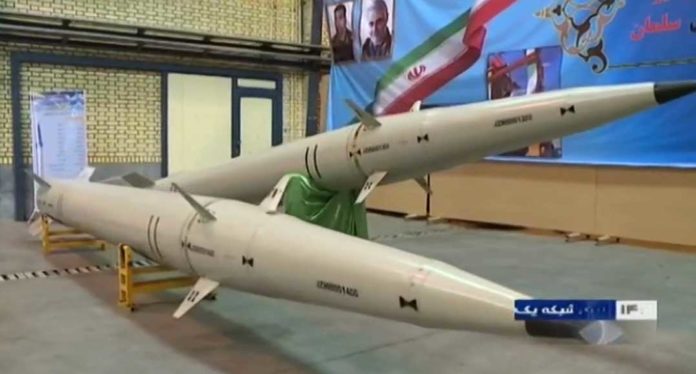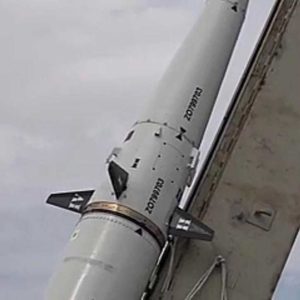

Iran’s Revolutionary Guards Corps (IRGC) unveiled today the existence of a new tactical ballistic missile representing a generation leap in ballistic missile technology. The 4th Generation Raad-500 (Thunder) introduces an improved aerodynamic design, composite casing rocket propulsion, and terminal precision capability recently demonstrated by Iran on its attack on the US Airbase of Al Assad in Iraq.

It shares the physical dimensions with the Fateh 110, but improves payload to weight ratio. The new missile weighs half the weight of the Fateh 110 (3320 kg) while extending the Fateh 110 range to 500 km (adding 200 km). The missile used a separable maneuvering warhead that shapes the warhead stage trajectory after separation to improve impact accuracy.
The missile uses four canard fins placed at the main contributor to this improvement is Zohair, a new rocket engine made with carbon fibers composite rocket casing, designed to withstand pressures up to 100 bars at temperatures of 3,000 degrees (Celsius).
Until now rocket casing made of steel was used for this purpose. Tehran also unveiled a bigger rocket engine designed to propel satellites and missile’s upper stages in space. This rocket engine also implements composite casing and thrust vectoring enabling a missile to shape its trajectory as it moves in space. This capability is useful for placing satellites in orbit and improving the accuracy of reentry vehicles before entering the earth’s atmosphere.





















